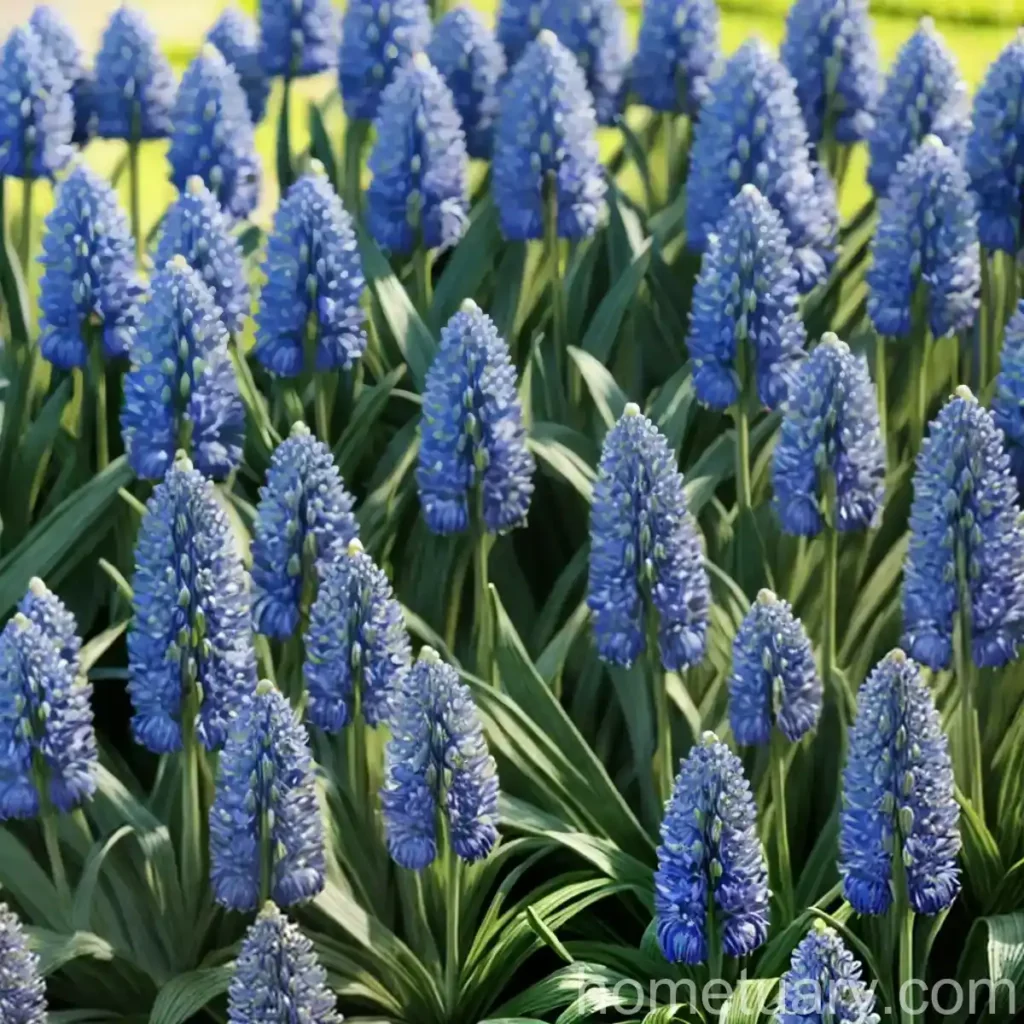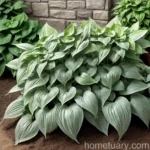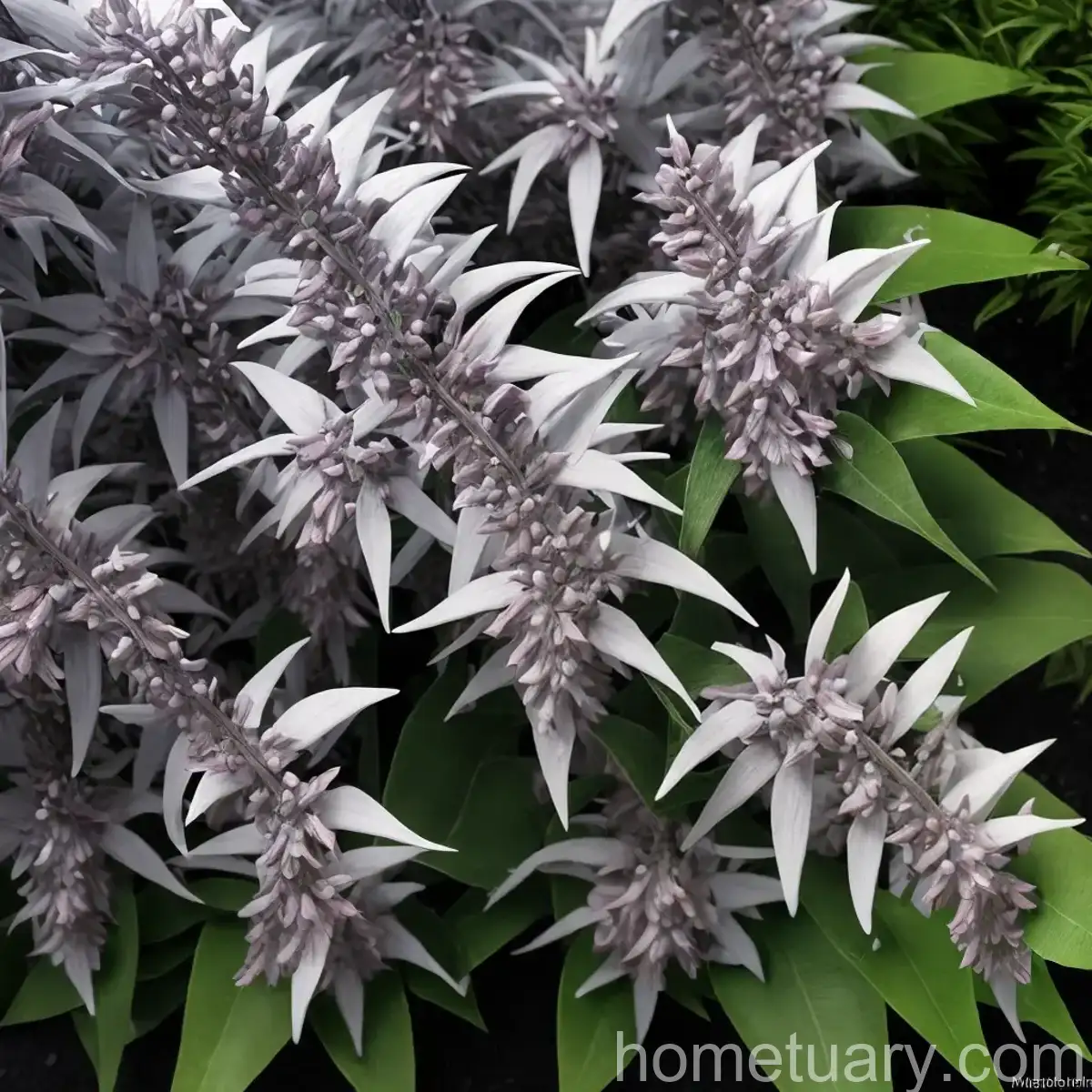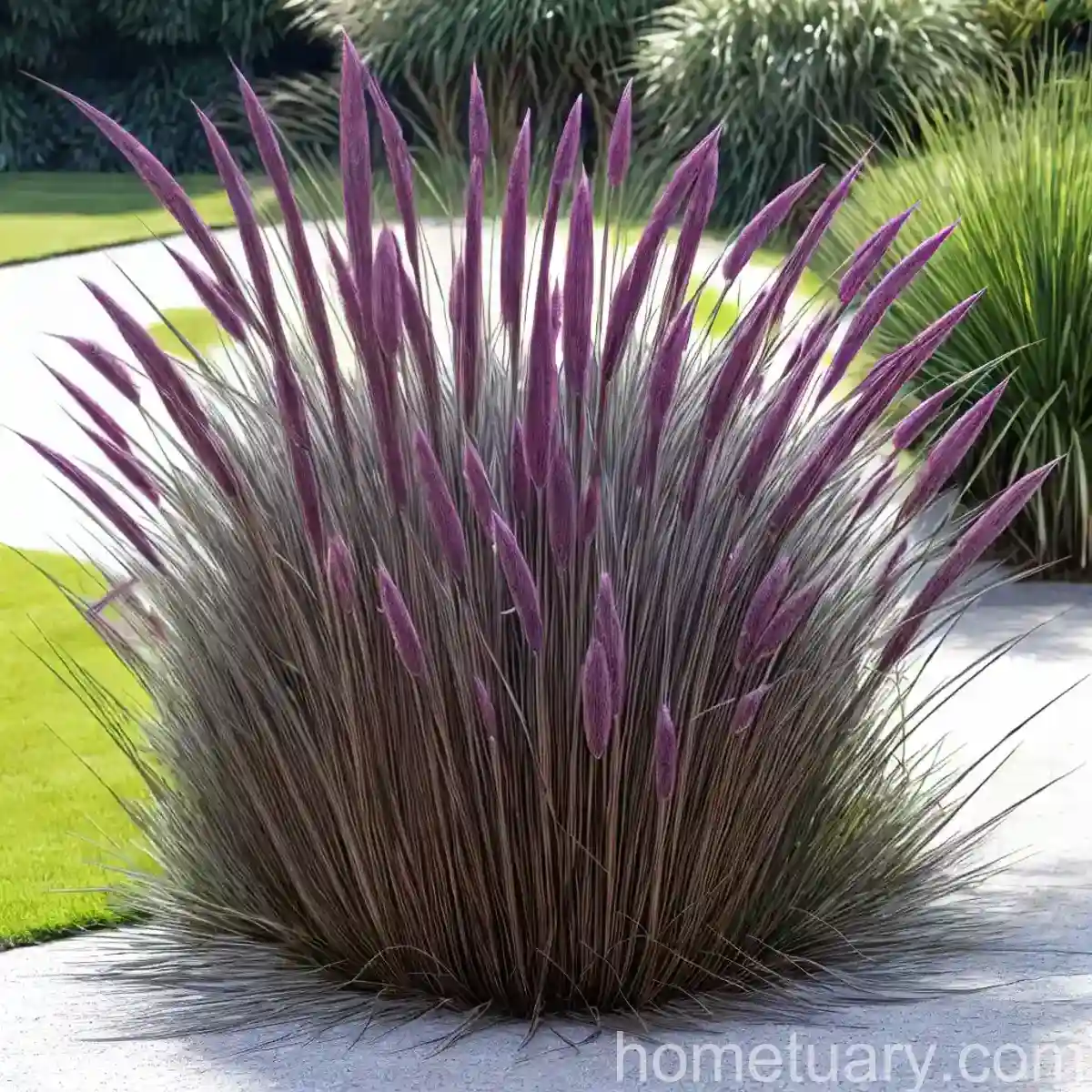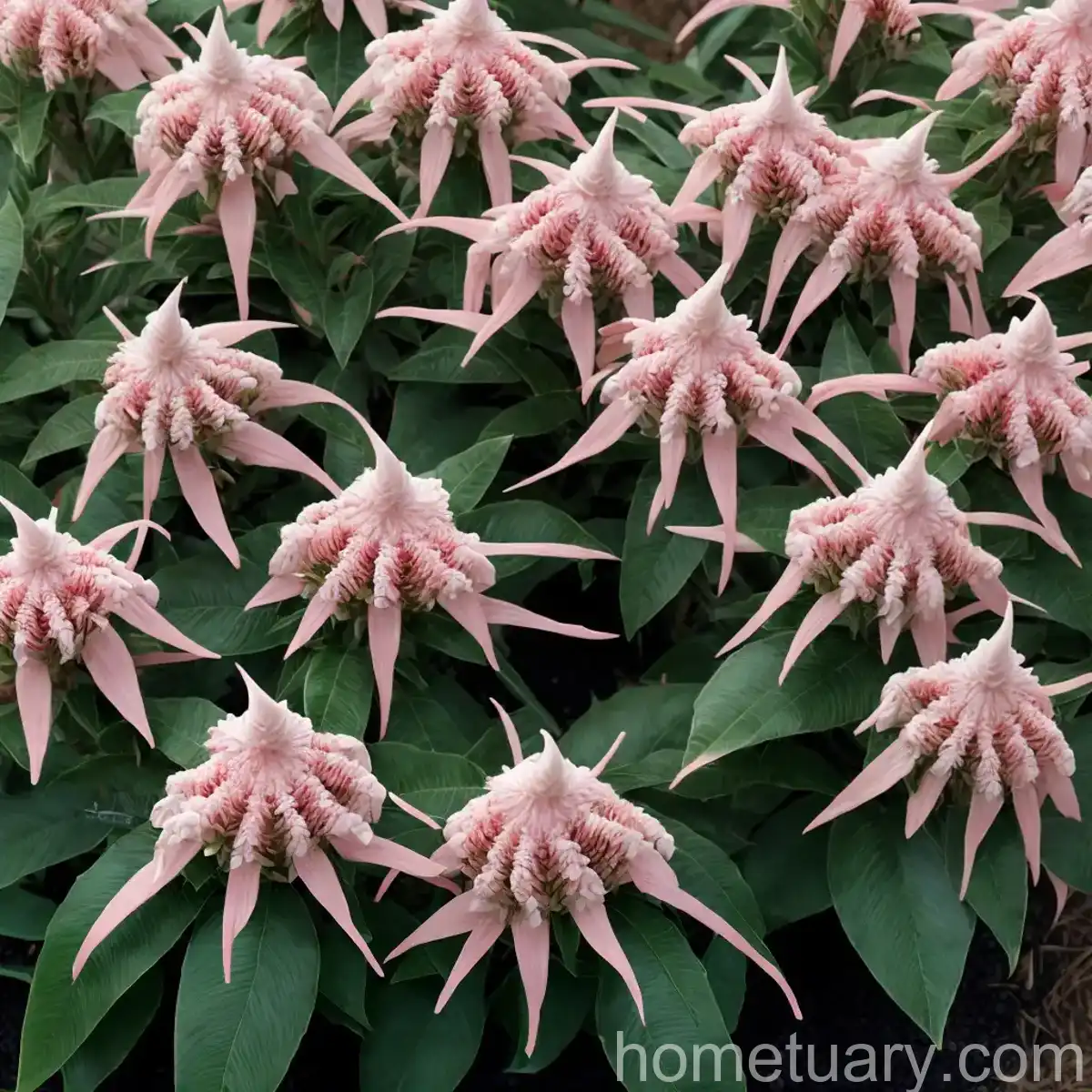Big Blue Lilyturf (Liriope muscari): A Comprehensive Guide
Liriope muscari, commonly known as big blue lilyturf, is a versatile and visually appealing perennial plant that is valued for its ornamental qualities and low maintenance requirements. This comprehensive guide aims to provide valuable insights into the cultural uses, care, propagation, and landscaping potential of Liriope muscari. Whether you are a professional landscaper, a gardening enthusiast, or someone looking to enhance the aesthetic appeal of your outdoor space, this guide will equip you with the knowledge needed to cultivate and care for big blue lilyturf successfully.
What is Big Blue Lilyturf (Liriope muscari)?
Liriope muscari is a species of flowering plant in the asparagus family, Asparagaceae. It is native to East Asia, including China, Taiwan, and Japan. The plant is characterized by its tufted, grass-like foliage and erect flower spikes adorned with small, violet-blue blooms. Liriope muscari is a clump-forming perennial that is valued for its versatility and ability to thrive in various growing conditions.
The plant’s common name, big blue lilyturf, aptly describes its striking blue flowers and grass-like foliage. It is worth noting that Liriope muscari is often confused with Liriope spicata, another species within the Liriope genus. However, Liriope muscari is distinguished by its broader leaves and more compact growth habit.
Key Takeaways: Big Blue Lilyturf (Liriope muscari)
Before delving into the specific aspects of caring for and utilizing Liriope muscari, let’s highlight some key takeaways associated with this versatile plant. These takeaways will provide a glimpse of the plant’s characteristics and its potential uses in landscaping and gardening settings.
- Big Blue Lilyturf Care: Liriope muscari is relatively low-maintenance, making it an excellent choice for gardeners seeking a resilient and visually appealing plant.
- Liriope muscari Varieties: There are several cultivated varieties of Liriope muscari, offering a range of foliage colors and sizes to suit various preferences and design needs.
- Liriope muscari Planting Tips: Understanding the optimal planting conditions, including soil preferences and sunlight requirements, is crucial for the successful establishment of Liriope muscari.
- Big Blue Lilyturf Cultivation: The plant’s adaptability to different growing conditions makes it suitable for a wide range of landscaping applications, from borders and edging to groundcover and mass plantings.
- Big Blue Lilyturf Characteristics: Liriope muscari is valued for its attractive foliage, vibrant flowers, and its ability to thrive in shaded areas, adding versatility to its landscape use.
- Big Blue Lilyturf Benefits: Beyond its ornamental value, Liriope muscari offers erosion control benefits, weed suppression, and serves as a pollinator attractor, contributing to ecological diversity.
These key takeaways set the stage for a detailed exploration of big blue lilyturf’s cultural uses, care requirements, and its potential impact in various gardening and landscaping scenarios. Let’s delve into each of these aspects to gain a deeper understanding of Liriope muscari and how to maximize its potential in outdoor environments.
Cultural Uses of Big Blue Lilyturf (Liriope muscari)
The cultural uses of Liriope muscari encompass a broad spectrum of applications, from ornamental landscaping to ecological benefits. Understanding the plant’s versatility and adaptability is fundamental to harnessing its full potential in outdoor settings. Here are some common cultural uses of big blue lilyturf:
Ornamental Landscaping
-
Groundcover: Liriope muscari’s dense, grass-like foliage and low growth habit make it a popular choice for groundcover plantings. Its ability to form a lush carpet of foliage enhances visual appeal while offering practical benefits such as weed suppression.
-
Borders and Edging: The uniform growth habit of Liriope muscari makes it well-suited for delineating borders and edging garden beds. Its attractive foliage provides a defined and neat appearance to garden borders.
-
Mass Plantings: The plant’s clump-forming nature and lush foliage make it ideal for mass plantings. Whether used in conjunction with other perennials or as a standalone planting, Liriope muscari creates visually impactful displays.
-
Container Planting: Liriope muscari’s adaptability to container planting extends its landscaping potential to patios, balconies, and outdoor living spaces. Its ornamental qualities make it a versatile choice for potted arrangements.
Ecological Benefits
-
Pollinator Attraction: The small, violet-blue flowers of Liriope muscari attract pollinators such as bees and butterflies, contributing to the overall ecological diversity of the garden.
-
Erosion Control: When planted on slopes or areas prone to erosion, Liriope muscari’s dense root system helps stabilize the soil, reducing the risk of erosion and soil loss.
-
Wildlife-Friendly Features: The plant’s dense foliage provides cover and refuge for small wildlife, contributing to a balanced and biodiverse garden ecosystem.
Understanding the diverse cultural uses of Liriope muscari sets the stage for exploring the specific care requirements needed to maximize the plant’s potential in various landscaping and gardening scenarios.
Care Requirements for Big Blue Lilyturf (Liriope muscari)
Caring for Liriope muscari involves considerations related to water, sunlight, soil, fertilizer, pruning, and propagation. Each of these factors plays a critical role in ensuring the plant’s health and vigor, ultimately contributing to its ornamental value in outdoor settings. Let’s explore the essential care requirements for cultivating and maintaining big blue lilyturf.
Water
The water requirements of Liriope muscari are relatively moderate once the plant is established. During the initial establishment phase, consistent watering is essential to promote healthy root development and ensure the plant’s ability to withstand drought conditions.
-
Establishment Phase: Water newly planted Liriope muscari regularly, ensuring that the soil remains consistently moist but not waterlogged. This helps the plant establish a robust root system.
-
Mature Plants: Once established, Liriope muscari demonstrates good drought tolerance. Water mature plants during extended dry periods, providing enough moisture to keep the soil slightly moist but not saturated.
-
Watering Frequency: In general, Liriope muscari benefits from deep, infrequent watering rather than frequent, shallow watering. This encourages the development of deep roots, improving the plant’s resilience to dry conditions.
Sunlight
Liriope muscari is prized for its ability to thrive in various light conditions, making it a versatile choice for landscapers and gardeners seeking a plant that can adapt to different environments.
-
Full Sun: While Liriope muscari can tolerate full sun, it generally thrives in partial to full shade. In regions with intense summer heat, providing some afternoon shade can help prevent foliage scorch.
-
Partial to Full Shade: This is the ideal light condition for Liriope muscari. It performs exceptionally well under the dappled light of trees or in areas with consistent filtered sunlight.
-
Site Selection: When planting Liriope muscari, select a site that aligns with the plant’s light preferences, considering factors such as the angle of sunlight throughout the day and the presence of nearby structures or vegetation that may provide shade.
Fertilizer
Applying fertilizer judiciously can enhance the growth and vigor of Liriope muscari, ensuring that the plant has access to essential nutrients for optimal performance.
-
Fertilizer Timing: Apply a balanced, slow-release fertilizer in early spring as new growth emerges. This provides a nutrient boost to support the plant’s initial growth phase after winter dormancy.
-
Fertilizer Type: A general-purpose, granular fertilizer with balanced NPK (nitrogen, phosphorus, and potassium) ratios is suitable for Liriope muscari. Alternatively, organic fertilizers can also support the plant’s long-term health without the risk of leaching.
-
Application Rate: Follow the manufacturer’s recommendations for application rates, taking into account the size and age of the Liriope muscari plants in question. Avoid excessive fertilization, as this can lead to an imbalance in nutrient uptake.
Soil
Liriope muscari thrives in well-draining, humus-rich soil, and benefits from modest soil amendment and maintenance practices to ensure optimal growing conditions.
-
Soil Type: Well-draining, loamy soil with good organic matter content is ideal for Liriope muscari. The plant can tolerate a range of soil pH levels, but slightly acidic to neutral soil is generally preferred.
-
Soil Amendment: Prior to planting, incorporate well-rotted compost or organic matter into the soil to improve its structure and fertility. This encourages healthy root development and overall plant vigor.
-
Mulching: Apply a layer of organic mulch around Liriope muscari to conserve soil moisture, suppress weed growth, and provide a consistent source of organic matter as the mulch breaks down over time.
Pruning
Pruning plays a role in maintaining Liriope muscari’s aesthetic appeal and managing its growth habit, ensuring that the plant remains tidy and visually attractive.
-
Spring Cleanup: In early spring, remove any tattered or damaged foliage from the previous season. This enhances the plant’s overall appearance and allows for the emergence of new, healthy growth.
-
Dividing Clumps: Over time, Liriope muscari may form dense clumps that warrant division. Divide the clumps in spring to rejuvenate the plants and encourage vigorous growth.
-
Pruning Flower Spikes: After the flowers have faded, pruning the spent flower spikes promotes a tidier appearance and redirects the plant’s energy toward vegetative growth and root development.
Propagation
Propagating Liriope muscari allows for the expansion of existing plantings or the creation of new displays, providing an avenue for gardening enthusiasts to multiply their Liriope muscari stock.
Division
-
Division Timing: Perform division in early spring, just as new growth begins to emerge. This minimizes the disruption to the plant and allows it to establish in its new location before the onset of summer heat.
-
Division Process: Carefully dig up established clumps of Liriope muscari, ensuring that each division has a substantial portion of roots and healthy foliage. Replant the divisions at the appropriate spacing and depth.
Seed Propagation
-
Seed Collection: Liriope muscari produces berries after flowering, and these berries contain seeds that can be collected once they have ripened and turned black.
-
Seed Sowing: Sow Liriope muscari seeds in a nursery bed or containers filled with a well-draining seed starting mix. Keep the soil consistently moist and provide warmth to encourage germination.
-
Seedling Care: Once the seedlings have developed several sets of true leaves, they can be transplanted into individual pots or directly into the garden, depending on the desired planting scheme.
Understanding the propagation methods for Liriope muscari provides gardeners and landscapers with the means to expand their plantings and create cohesive displays that maximize the plant’s ornamental and functional attributes.
Container Popularity of Big Blue Lilyturf (Liriope muscari)
The adaptability of Liriope muscari to container planting makes it a popular choice for individuals looking to enhance the aesthetic appeal of patios, balconies, and outdoor living spaces. Container-grown Liriope muscari is a versatile feature in both residential and commercial settings, offering an array of opportunities for creative and visually appealing arrangements.
Container Selection
-
Size and Depth: Choose containers that provide ample room for the roots to develop, promoting healthy growth and longevity. A depth of at least 12 inches (30 cm) is generally recommended.
-
Drainage: Select containers with drainage holes to prevent waterlogging, ensuring that excess moisture can escape to maintain optimal soil conditions.
-
Material: Containers made from durable materials such as plastic, fiberglass, or ceramic are suitable for Liriope muscari, providing insulation and stability for the plants.
Container Planting Tips
-
Potting Mix: Use a high-quality, well-draining potting mix specifically formulated for container plants. This promotes healthy root development and reduces the risk of water-related issues.
-
Watering Practices: Container-grown Liriope muscari may require more frequent watering than plants in the ground, especially during hot and dry periods. Monitor soil moisture levels and water as needed to prevent drought stress.
-
Light Exposure: Position containers in areas that align with Liriope muscari’s light preferences, ensuring that the plants receive adequate sunlight or shade based on their specific requirements.
-
Fertilization: Apply a balanced, slow-release fertilizer to container-grown Liriope muscari in spring, following the recommended application rates to support healthy growth throughout the growing season.
Container-grown Liriope muscari lends itself to various design possibilities, from standalone planters to mixed arrangements that capitalize on its ornamental value and low maintenance requirements.
Common Diseases of Big Blue Lilyturf (Liriope muscari)
While Liriope muscari is generally resilient and not prone to serious disease issues, it is important for gardeners and landscapers to be aware of potential threats to the plant’s health. Vigilant monitoring and proactive management practices can help maintain the vigor and longevity of Liriope muscari plantings.
Disease Diagnosis
-
Anthracnose: Anthracnose, caused by fungal pathogens, may manifest as dark, sunken lesions on Liriope muscari foliage. Ensure proper air circulation and avoid overhead watering to minimize the risk of anthracnose development.
-
Rhizome Rot: Excessive soil moisture and poor drainage can lead to rhizome rot, characterized by decaying and discolored rhizomes. Plant Liriope muscari in well-draining soil and avoid waterlogged conditions to mitigate this risk.
-
Leaf Spot: Leaf spot diseases may affect the foliage of Liriope muscari, leading to the development of circular, dark lesions. Prune and remove affected foliage and ensure proper sanitation to prevent the spread of leaf spot.
-
Rust: Rust diseases can cause the formation of orange or brown pustules on Liriope muscari leaves. Consider applying fungicidal treatments if rust symptoms are observed, and ensure that the plants are not overcrowded, promoting good air circulation.
Disease Prevention
-
Cultural Practices: Maintaining proper cultural practices, including adequate spacing between plants, promoting good air circulation, and avoiding overwatering, can significantly reduce the risk of disease development.
-
Sanitation: Regularly remove and dispose of any diseased or decaying foliage to prevent the spread of fungal pathogens and mitigate disease pressure within Liriope muscari plantings.
-
Fungicidal Treatments: In severe cases of fungal diseases, consider applying fungicidal treatments as a preventive or curative measure, following the manufacturer’s recommendations for application and safety.
Understanding the potential disease issues and implementing preventative measures is essential for preserving the health and visual appeal of Liriope muscari in landscaping and garden settings.
Common Pests Affecting Big Blue Lilyturf (Liriope muscari)
In addition to disease threats, Liriope muscari may face challenges from common garden pests that can affect its growth and appearance. Identifying and addressing pest issues promptly can help maintain the plant’s overall health and vitality.
Pest Identification
-
Aphids: These small, sap-feeding insects may cluster on Liriope muscari foliage, causing distortion and yellowing of leaves. Use insecticidal soap or horticultural oil to control aphid infestations.
-
Spider Mites: Spider mites are tiny arachnids that may infest Liriope muscari, causing stippling and discoloration of foliage. Regularly spraying the plants with a strong jet of water can help deter and manage spider mite populations.
-
Snails and Slugs: These mollusks may feed on Liriope muscari foliage, leaving behind characteristic feeding trails and ragged edges on leaves. Employ physical barriers or bait traps to control snail and slug populations.
-
Thrips: Thrips are slender, winged insects that may cause silvering of Liriope muscari foliage due to their feeding activity. Consider using insecticidal treatments to manage thrips infestations effectively.
Pest Control
-
Natural Predators: Encouraging natural predators such as ladybugs, lacewings, and predatory mites can help keep pest populations in check, contributing to biological pest control in the garden.
-
Cultural Controls: Practices such as regular monitoring, maintaining cleanliness in the garden, and optimizing plant health through proper watering and fertilization can reduce the susceptibility of Liriope muscari to pest infestations.
-
Pest-Specific Treatments: Employ pest-specific control measures, including insecticidal soaps, horticultural oils, or targeted insecticides, to manage pest populations while minimizing the impact on beneficial organisms.
Being attentive to potential pest threats and implementing integrated pest management strategies can help preserve the aesthetic and functional value of Liriope muscari in various landscaping contexts.
Botanist’s Tips for Big Blue Lilyturf (Liriope muscari)
Drawing on the expertise of botanists and plant scientists, here are some practical tips for cultivating and caring for Liriope muscari in outdoor environments, maximizing its ornamental potential and ecological contributions.
Tip 1: Selecting Complementary Companion Plants
When incorporating Liriope muscari into garden designs, consider selecting companion plants that complement its growth habit, foliage colors, and light preferences. The juxtaposition of foliage textures and the interplay of flowering times can create visually captivating displays, enhancing the overall aesthetic impact of the planting area.
-
Foliage Contrast: Choose companion plants with contrasting foliage textures and colors to create dynamic and visually striking combinations. For example, pairing Liriope muscari with broad-leaved, variegated plants can create an appealing contrast.
-
Complementary Flowering Times: Select plants that bloom at different times of the year, ensuring continuous visual interest in the planting area and extending the seasonal appeal of the landscape.
-
Height Variation: Incorporate plants of varying heights to create a layered and dynamic visual effect, utilizing Liriope muscari’s mid-height stature to bridge the gap between taller and shorter plantings.
Tip 2: Pruning for Aesthetic Appeal and Health
Regular pruning not only maintains the tidy appearance of Liriope muscari but also encourages new growth and rejuvenates established plantings. When pruning, focus on removing dead or discolored foliage and spent flower spikes to promote overall plant health and vitality.
- Sterile Pruning Tools: Use clean,

